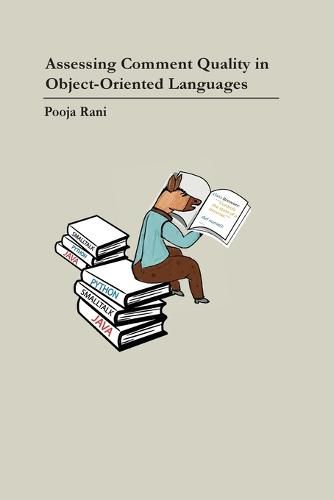Readings Newsletter
Become a Readings Member to make your shopping experience even easier.
Sign in or sign up for free!
You’re not far away from qualifying for FREE standard shipping within Australia
You’ve qualified for FREE standard shipping within Australia
The cart is loading…






This title is printed to order. This book may have been self-published. If so, we cannot guarantee the quality of the content. In the main most books will have gone through the editing process however some may not. We therefore suggest that you be aware of this before ordering this book. If in doubt check either the author or publisher’s details as we are unable to accept any returns unless they are faulty. Please contact us if you have any questions.
High-quality code comments support developers in software maintenance and program comprehension tasks. However, the semi-structured nature of comments, several conventions to write comments, and the lack of quality assessment tools for all aspects of comments make comment evaluation and maintenance a non-trivial problem. To understand the specification of high-quality comments to build effective assessment tools, we emphasize on acquiring a multi-perspective view of the comments, which can be approached by analyzing (1) the academic support for comment quality assessment, (2) developer commenting practices across languages, and (3) developer concerns about comments. To help researchers and developers in building comment quality assessment tools, we contribute: (i) a systematic literature review (SLR) of ten years (2010-2020) of research on assessing comment quality, (ii) a taxonomy of comment quality attributes, (iii) an empirically validated taxonomy of class comment information types (CITs) from three programming languages, (iv) a multi-programming-language approach to automatically identify the CITs, and (v) an empirically validated taxonomy of comment convention-related questions and recommendation from various Q&A forums. Our contributions provide various kinds of empirical evidence of the developer's interest in reducing efforts in the software documentation process, of the limited support developers get in automatically assessing comment quality, and of the challenges they face in writing high-quality comments.
$9.00 standard shipping within Australia
FREE standard shipping within Australia for orders over $100.00
Express & International shipping calculated at checkout
This title is printed to order. This book may have been self-published. If so, we cannot guarantee the quality of the content. In the main most books will have gone through the editing process however some may not. We therefore suggest that you be aware of this before ordering this book. If in doubt check either the author or publisher’s details as we are unable to accept any returns unless they are faulty. Please contact us if you have any questions.
High-quality code comments support developers in software maintenance and program comprehension tasks. However, the semi-structured nature of comments, several conventions to write comments, and the lack of quality assessment tools for all aspects of comments make comment evaluation and maintenance a non-trivial problem. To understand the specification of high-quality comments to build effective assessment tools, we emphasize on acquiring a multi-perspective view of the comments, which can be approached by analyzing (1) the academic support for comment quality assessment, (2) developer commenting practices across languages, and (3) developer concerns about comments. To help researchers and developers in building comment quality assessment tools, we contribute: (i) a systematic literature review (SLR) of ten years (2010-2020) of research on assessing comment quality, (ii) a taxonomy of comment quality attributes, (iii) an empirically validated taxonomy of class comment information types (CITs) from three programming languages, (iv) a multi-programming-language approach to automatically identify the CITs, and (v) an empirically validated taxonomy of comment convention-related questions and recommendation from various Q&A forums. Our contributions provide various kinds of empirical evidence of the developer's interest in reducing efforts in the software documentation process, of the limited support developers get in automatically assessing comment quality, and of the challenges they face in writing high-quality comments.